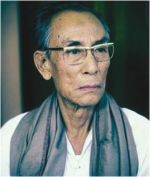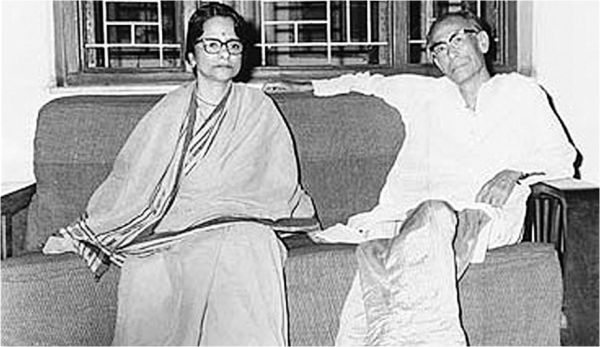| Post Campus
Sachin Korta:
The Pride of Comilla and Bangladesh
Asrar Chowdhury
 Very near to the Comilla Victoria College in Chortha, there once stood a proud building on an 18 acre (60 bighas) estate. At two different points in its existence- the music of the house attracted Rabindranath Tagore and Kazi Nazrul Islam. In a 'simple twist of fate', today a Government Poultry Farm stands on the estate that camouflages the once proud building that lies in ruins. Today the building is almost forgotten. Very near to the Comilla Victoria College in Chortha, there once stood a proud building on an 18 acre (60 bighas) estate. At two different points in its existence- the music of the house attracted Rabindranath Tagore and Kazi Nazrul Islam. In a 'simple twist of fate', today a Government Poultry Farm stands on the estate that camouflages the once proud building that lies in ruins. Today the building is almost forgotten.
It was from this building, estate and Comilla (then a part of the Princely State of Tripura) that the seeds of timeless tunes were sown. Tunes that would go on to re-define Bangla Gaan and the Bollywood film industry forever. As the young generation of Bangladesh is mesmerised by the classically trained folk artiste Kiran Chandra Roy and the haunting husky voice of Anusheh Anadil revisiting these tunes, one can only remain speechless finding out that it was in this ruinous building, a Prince was born to the Royal Family of Tripura. He went on to become a Prince of Melody carrying with him, in his heart, all his life the folk tunes of his birthplace Bangladesh and the Tipra tunes of the Tripura hills, the land of his forefathers. That prince is none other than Sachin Dev Burman (Oct 1, 1906 - Oct 31, 1975), or Sachin Korta in Bangla Gaan.
Sachin Korta was born to Rajah Nabadweep Chandra Burman and Nirupama Devi. He was the youngest of five sons and four daughters. His four brothers- Prashanta, Profulla, Tribendu, and Kiron-had left Comilla for studies or other reasons. Rajah Nabadweep decided to keep his youngest and most favourite child within eye's reach for as long as he could. Young Korta was brought back from Agartala Kumar Boarding- a Harrow-Eaton type school for children of the aristocrats. Sachin Korta started his long association with Comilla studying at Comilla Yusuf School (1912-14); Comilla Zilla School (Class V to Matriculation; 1914-20); and Comilla Victoria College, (Intermediate and Bachelor of Arts, 1922, 1925). His association with Comilla in his formative years created his outlook for the rest of his life- his love and indebtedness to Bangla Gaan and Bangladesh.

Sachin Korta of Chortha and Meera.
Music was central to the Burman house. Sachin Korta's Father, Rajah Nabadweep and his sister, Tilottoma Devi were accomplished Sitar and Esraj players. In spite of an influence of classical music, it was the music of the soil from Madhab and Anwar that was his portal to a magical world. Madhab gave his Chhoto Korta his first musical lessons from Kirtan and the Ramayana. Anwar- a fisherman and a Bhatiyali singer- took his Chhoto Korta to where no prince had ever gone before, to the heart of folk music of Bangladesh. With Anwar, Sachin Korta learned how to make fishnets and traveled the Gomuti River. They passed through each village of Comilla, Brahman Baria, Murad Nagar and Homna with one objective- to live the folk music of Bangladesh.
Having lived the life of a 'folkie' and influenced by classical music through lineage, Sachin Korta stood out from other artistes in Bangla Gaan. As a composer, he was a pioneer in showing there is no conflict between our classical and folk music. As a performer, he knew how to throw words within a song and make the listener travel into a magical world with him. The Chhoto Korta from Chortha, Comilla, was proved wrong. The urban genteel could and did appreciate music of the soil, but that was only after the Prince of Melody presented his renditions.
The Diaspora in his compositions and his renditions made Sachin Korta unique. Bidding Comilla farewell and the possibility he may never return to his dream house in Chortha to revisit Madhab and Anwar was omnipresent in all his renditions. His wife Meera Deb Burman- also from Comilla and a lyricist of many of his timeless tunes wrote one song which Kiran Chandra Roy has revisited almost verbatim in spirit. This song makes this unique couple of Bangla Gaan, special.
In 1971, when their birthplace, Bangladesh, was fighting her Liberation War, Sachin Korta and Meera came out and fought with music. The couple from Comilla collected funds singing Tak Dum, Tak Dum Bajai Bangladesh-er Dhol, acknowledging that Bangla gave them birth. On December 16, 1971, as the State of Bangladesh became a reality, one couple from Comilla was distributing sweets in Bombay. The man was chanting in his native Comilla dialect 'Amar Dash Shadhin Hoya Gese'!
If you can ever make the pilgrimage to that ruinous house in Chortha, Comilla, do sing one of their songs in fond memory of Sachin Korta and Meera- children of the soil of Comilla and Bangladesh.
(The author teaches economic theory at Jahangirnagar University and North South University.)

Sachin Korta's house in Chortha, Comilla.
| 